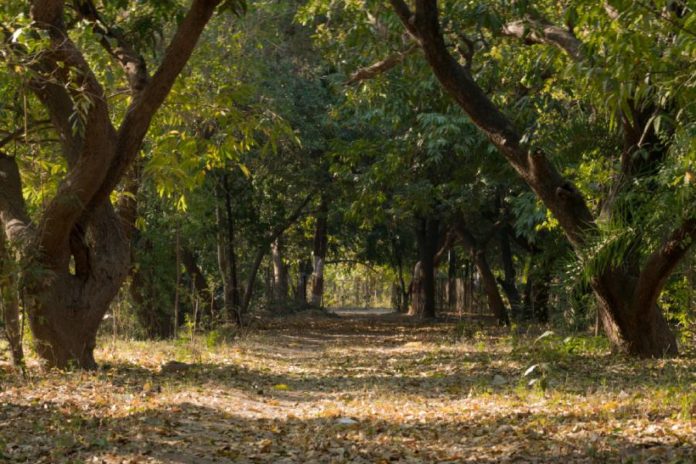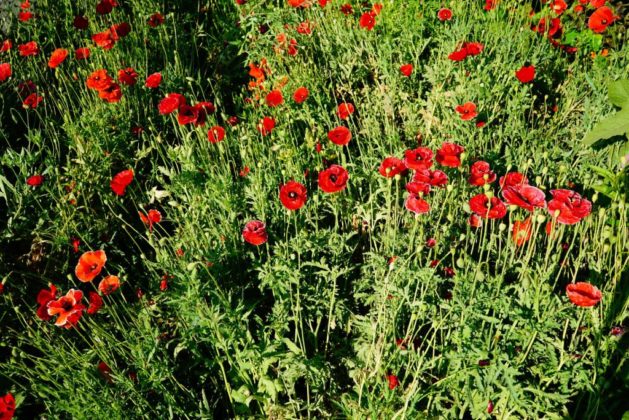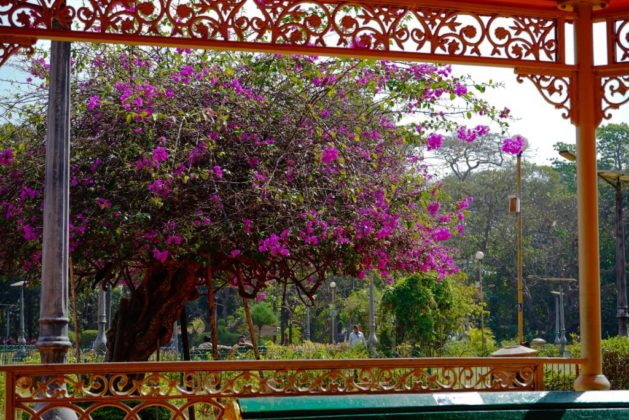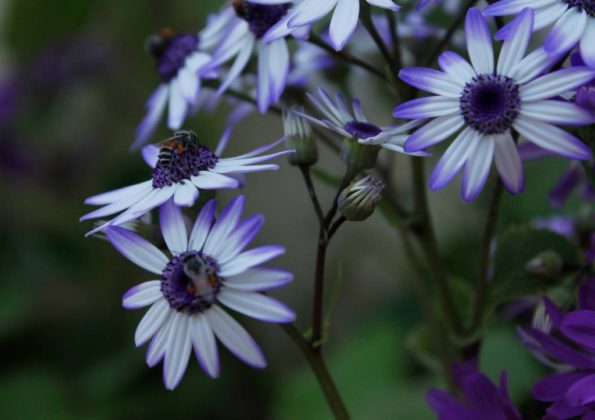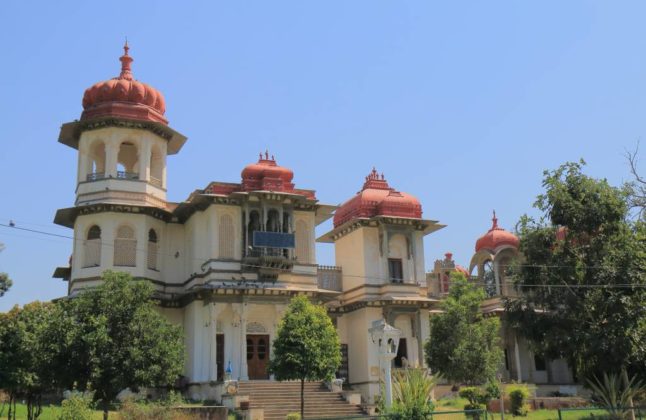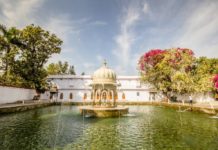Udaipur Zoo, profoundly known as the Gulab Bagh Zoo, is a prominent landmark of the Udaipur city. It is named after the queen of flowers – Rose – that is generally found in the gardens. It’s a beautiful habitat of flora and fauna.
Apart from experiencing a variety of trees and animals, there are quite a few more things that you would love exploring within the compound of Gulab Bagh. There are several gardens, a lake, library, toy train, temples and mosques, food area, playgrounds and government offices.
History and Synopsis of Gulab Bagh
- Gulab Bagh is also known as the Sajjan Niwas Garden, named after its Maharana Sajjan Singh. Maharana Sajjan Singh Built the zoo in 1887.
- At some point in time, the garden was also called the Bada Bagh but was later changed.
- It covers an area of over 100 acres of land out of which nearly 66 acres is enriched with fruits and plants holding medicinal benefits.
- An engrossing story lies behind the library cum museum of Gulab Bagh. Maharana Sajjan Singh had laid the foundation of the vintage library on 2nd November 1980. The first curator of this museum was Mr Gauri Shankar Ojha. The library then named as ‘Victoria Hall Museum’, was inaugurated by Lord Lansdown. A stone statue of Queen Victoria was placed right in the front of the library. Later it was replaced by a statue of Mahatma Gandhi, and the library was renamed as Saraswati Bhawan Library.
- Amongst the numerous trees/plants that are available in Gulab Bagh, Sapota, Jackfruit, Litchi, Pomegranate, Mulberry, Pomelo, Litchi and some other medicinal plants are the most prominent varieties.
- The garden rested a lotus pond in its compound. The lake had beautiful water lilies; it was then demolished for the construction of the waterworks complex.
- During the rule of Maharana Fateh Singh, there were numerous flower and vegetable shows organised in the garden. The first one was recorded in 1888.
- The zoo organised animal fights for mere entertainment between Lions or Tigers and Wild Boars.
Things to Do at Gulab Bagh
- Flora: Witness a world of heterogenous fruits, flowers and plants. Amongst the numerous trees/plants that are available in the Gulab Bagh, one can encounter the most prominent varieties of fruit and medicinal plants. Some of them are Mangoes, Grapes, Guavas, Lemons, Mulberries, Pomegranate, Rayan, Bananas, Sapota, Litchi, Jackfruit, Wood Apples, Tamarind, Karonda, Arjun Trees, Campher, Jamun, Pummelo, Citron, Curry Leaves, Ficus Species, Dhanverjia, Jasmin, Kargi Lime Anola, Grandi Flora, Dawood and many more.
As the name says it all, Gulab Bagh has a delightful assortment of different species of roses across the garden. It is refreshing to have a sight of Mother Nature residing in this garden. - Fauna: True to its title of the ‘Udaipur Zoo’, Gulab Bagh is home to many animals like Rhinoceros, Tigers, Bears, Zebras, Deer, Black Leopards, Chinkara, Gazelle, and various species of birds. The animals are well kept by the authorities, yet they are jeopardised by the forest department to shift the animals to the zoological park built in Sajjangarh.
- Saraswati Library: A museum turned library is a must-visit site at Gulab Bagh. It was the first museum in Rajasthan, constructed by Maharana Fateh Singh in 1887. The museum was shifted to City Palace and renamed as Pratap Museum. The library is well-equipped with a collection of over 30,000 books and manuscripts related to History, Archaeology, Indology and many more that are dated back to the early medieval period.
- Navlakha Mahal: A religious place for the Arya Samaj devotees, Navlakha Mahal, is yet another spectacle in the garden. Situated in the central part of the garden, it is a place where Dayanand Saraswati, the founder of Arya Samaj, had spent his time practising spirituality.
- Toy Train: Gulab Bagh accommodates a mini train that runs on a nominal fee and can be enjoyed by both kids and adults alike. If you don’t feel like walking around the garden, just hop on the train, and it will help you discover almost the entire garden. The train station is named as the Luv Kush Railway Station.
- Kamal Talai: An enormous water body is created at the northeastern end of Gulab Bagh. This oval-shaped structure consists of four bridges inter-connected with each other.
- Miraj Jyotish Upvan: Constructed and managed by the Miraj Products Corporate Group there is an Acupressure park in Gulab Bagh named as ‘Miraj Jyotish Upvan’. It has a tethered tiled pathway to increase blood circulation as you keep walking on it. There are many ayurvedic and non-ayurvedic plants across the pathway to get a pleasurable experience.
- Accessing the location: Gulab Bagh is situated in the old city area beneath the banks of Lake Pichola. It is well connected with the Surajpole and Udaipole area. The entire road that surrounds Gulab Bagh is called the Gulab Bagh road. Gulab Bagh is about 20 km from the airport and just 1 km from the Udaipur Railway station. It is easily accessible from the city by local transport, taxis or tuk-tuks.
Entrance Fee and Timings
- Garden Fee: Adult and child Rs.25
- Zoo Fee: Adult Rs.5
- Camera Fee: Rs.15
Timings for Garden and Zoo:
The garden is open 24 hours and zoo timings are from 8AM to 6PM
Places to Visit Around Gulab Bagh
There are many tourist attractions to visit near Gulab Bagh. Some of the most prominent of all are:
- Lake Pichola
- City Palace, Udaipur
- Vintage and Classic car museum
- Pala Ganesh Temple
Best time to pay a visit
It is advisable to visit Gulab Bagh during morning hours or early evening, as the temperature is moderate during these hours and you could enjoy the most.
Mother Nature is a remarkable preceptor in life, how should one live in harmony is all you can learn from every element present on the planet. With the growing concrete jungle in the cities, we miss on many of these elements of nature that are serene and found in the forest away from our routinely reach. Gardens and zoos are the initiatives made towards getting this flora and fauna to an average person.

